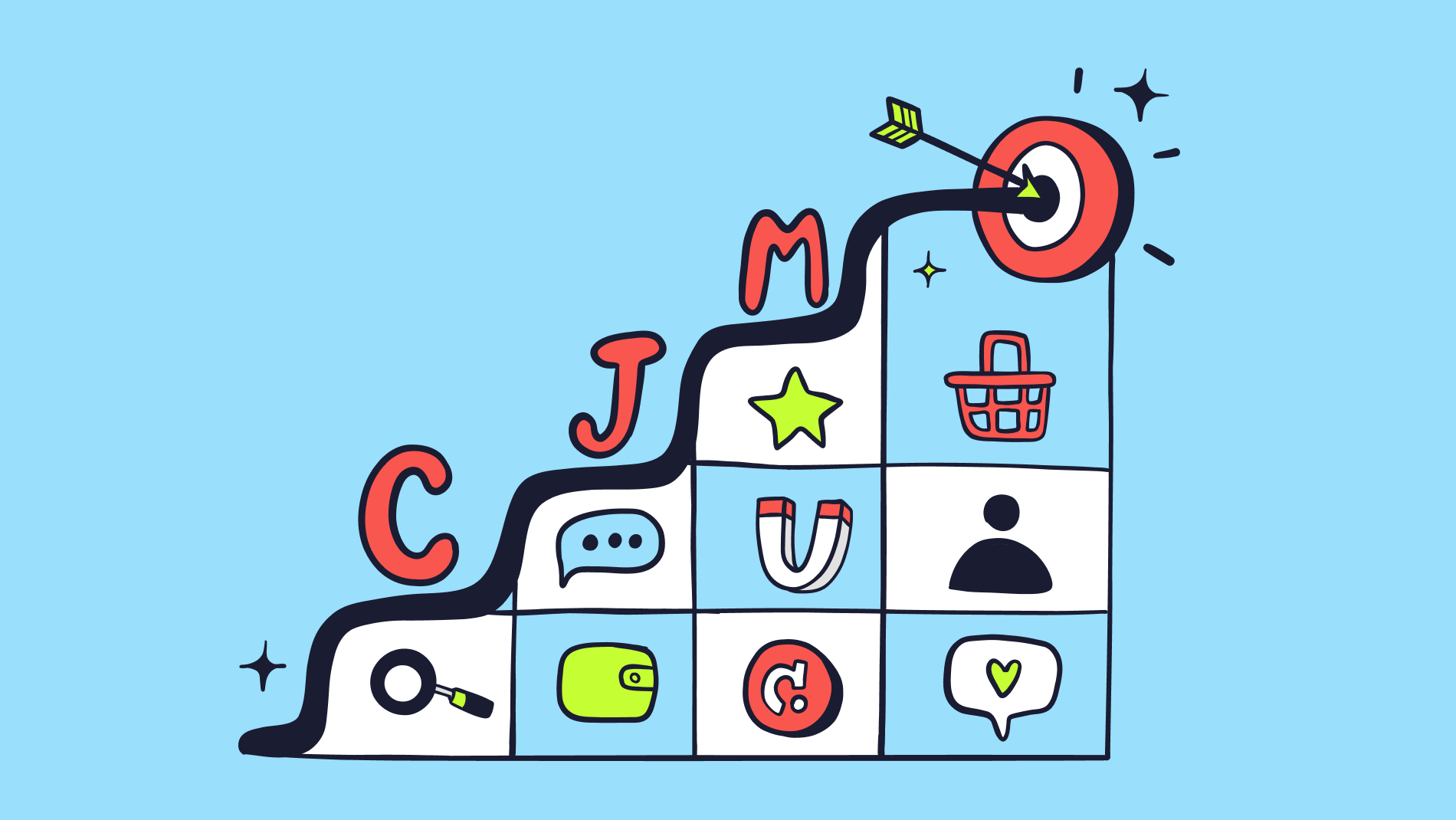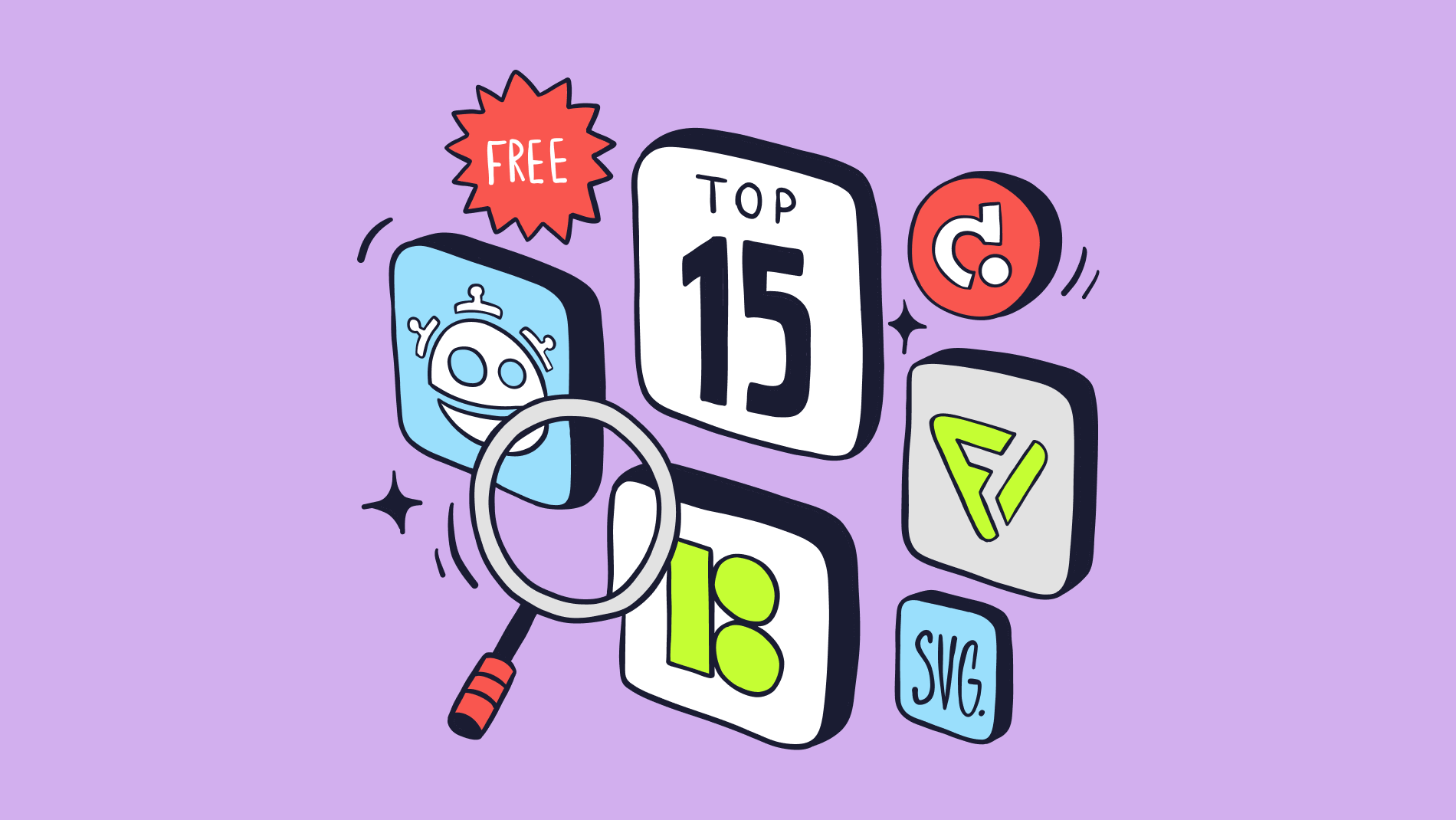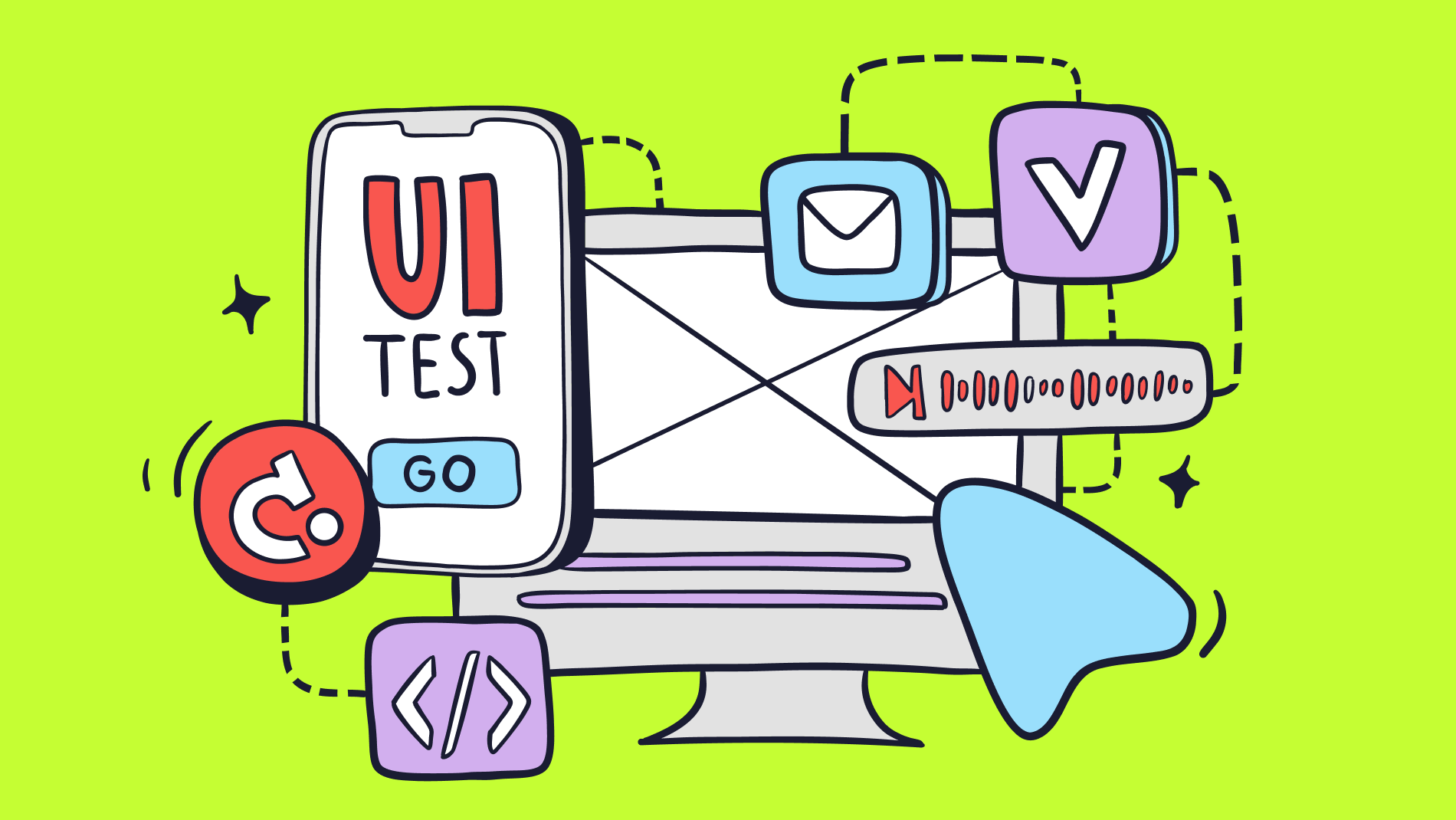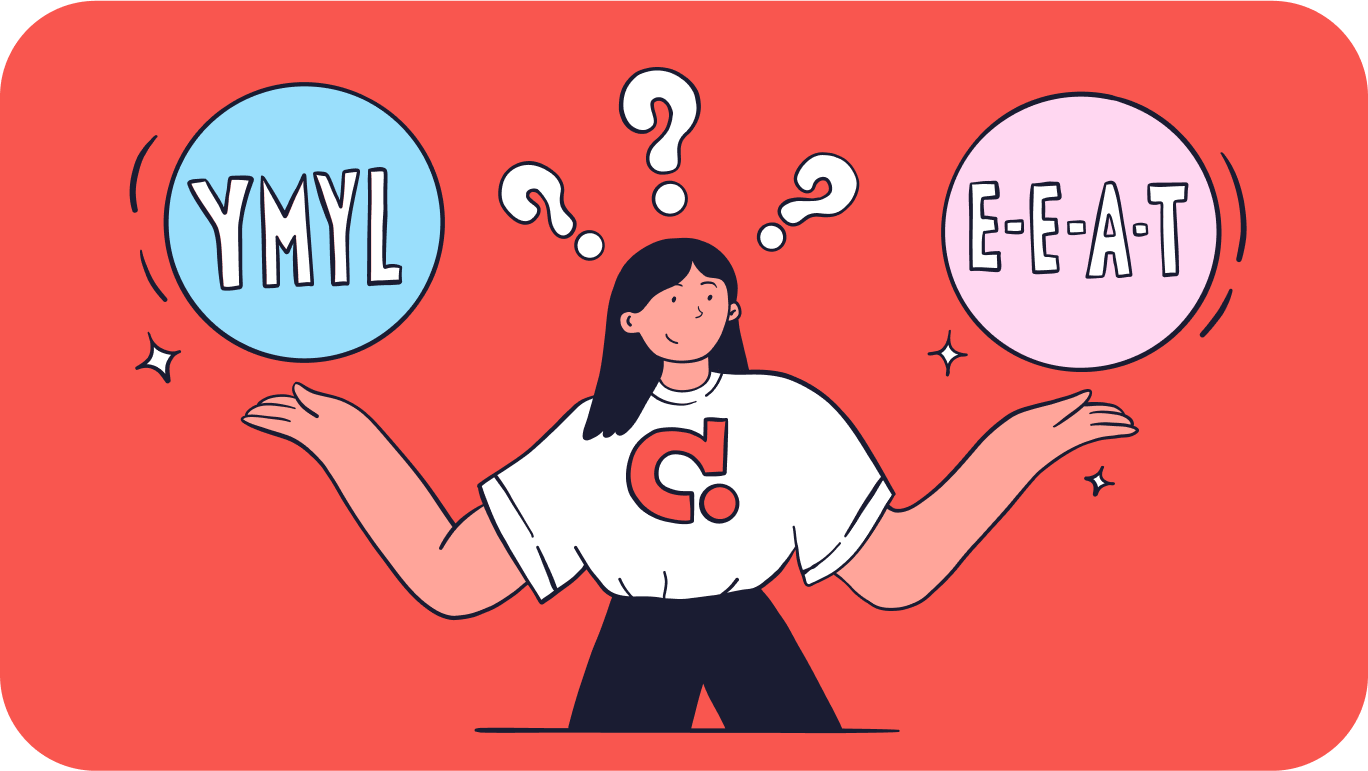Stages of the customer journey
Some stages in the customer journey are completed in minutes, while other stages can take days to think through. It is very important to understand the "customer journey" for business development and understanding customer logic. People's impressions are formed during their interactions with a company, from the introduction to a product or service to the feedback after a purchase. This helps in understanding how customers interact with the brand and what needs to be improved to enhance their experience. In addition, developing a marketing strategy depends on understanding the customer journey.
Awareness
In the awareness stage, the customer realises that they have a problem and need a solution. At this stage, the customer may not know what product or service he needs. But in any case, he will start doing research.
At this stage of the customer journey, brands provide content that helps customers find the problem and offers solutions. The goal is to help the buyer understand the new pain point, not to induce a purchase.
Creating awareness is a prerequisite for triggering promotion and getting closer to the audience. It involves creating interest and making sure that the product or service remains visible to potential buyers. It is a vital step towards success.
Consideration
The customer reaches the stage of interest and engagement by moving through the customer journey. Brand awareness including familiarity, history, perceived quality and reviews will be critical at this point. At this stage, the brand must build trust with consumers and create a connection with them. This step will be crucial in connecting with potential customers.
If a business does not create trust with potential customers at this stage, it will be difficult to move them to the next stages of the customer journey. You should strive to build brand awareness.
Conversion
The conversion stage is the step where a potential customer turns into a real customer. He or she signs up, subscribes, fills out a contact form or any other action that furthers the company's goals.
The customer has shown interest in the product or service at the conversion stage and has passed the previous stages of awareness and consideration. The focus is now on motivating customers to buy.
Companies often use specific approaches to increase conversion, such as clear calls to action, compelling offers, a user-friendly website or landing page, and customer testimonials or testimonials that build trust.
Success at the conversion stage is essential for a company's growth and profits. Conversions must be constantly analysed and optimised to increase conversion rates and maximise return on investment (ROI).
Purchase
At the most important stage of the customer journey, the buying stage, the customer makes a decision to purchase a product or service. The customer has already gone through the stages of awareness, consideration, decision and is ready to make a purchase at this stage.
To facilitate successful purchases, a company must provide the customer with a convenient shopping experience. This includes transparent pricing and information, secure payment processing, simple and straightforward shopping options.
Customer support during the buying process will be a plus. Responding promptly to customer concerns and questions will help instil trust and confidence, which will increase the likelihood of conversion. In addition, offering different payment methods and incentives such as discounts, promotions or free shipping will also motivate the buyer to complete the purchase.
Once the purchase is made, the company continues to interact with the customer by providing information about the order, delivery details and the necessary post-purchase support.
The purchase is the transition from a potential customer to a paying customer, and it is important that this phase is smooth and enjoyable to leave the customer with a positive impression and encourage them to come back again.
Post-purchase
Companies need to create positive post-purchase experiences to increase customer loyalty and engagement. At this stage, the focus is on retaining and improving customer experiences to build long-term relationships and encourage repeat business.
Companies should focus on customer support and follow-up. This includes staying informed about order status, providing shipping and tracking information, and promptly addressing post-purchase questions and concerns.
Expressing gratitude and appreciation to the customer for the purchase can play an important role in creating a positive brand image and building customer loyalty. Moreover, customer feedback will be a plus for improving products and services. Surveys, reviews or feedback forms can help a company understand what was done well and identify areas that need improvement. And other potential customers will trust the company more if they see feedback from other customers.
To maintain customer satisfaction, handle questions and concerns that arise after a purchase with understanding and stay in touch. Timely and effective support can turn a potentially negative experience into a positive one, leading to loyal and satisfied customers in the long run.
Additionally, companies use the post-purchase phase to upsell or cross-sell relevant products and services. By knowing a customer's preferences and purchase history, targeted and personalised offers can be made that will trigger a desire for repeat purchases.
What is a Customer Journey Map?
Customer Journey Map (CJM) is a tool used by companies to understand and visualise the entire experience of a customer's interaction with a company. Companies can use Customer Journey Map (CJM) to better understand and visualise every aspect of a customer's interaction with a product. The map provides a detailed overview of each point of contact and interaction with the customer, from the first point of contact to the last stages of interaction with the brand. At each CJM seeks to learn about the customer's feelings, needs and pain points.
The basic principles of creating a Customer Journey Map?
To create a good customer journey map, you need to clearly understand all stages of the buying journey and put yourself in the customer's shoes. That's why we've put together some basic principles that will help you understand your customer and create a Customer Journey Map:
1. Understanding the customer
To create an effective CJM, a company must deeply understand its target customers. To create an accurate persona for a segment, you need to conduct research, analyse customer feedback and collect data.
2. Identifying touchpoints
A touchpoint is any point of interaction between a customer and a company, such as visiting a website, communicating on social media, contacting customer service, or purchasing a product. Identifying and mapping these points of interaction is essential for a holistic view of the customer experience.
3. Defining customer goals
At every step of the journey, customers have specific goals they want to achieve. This could be seeking information, making a purchase, or seeking support. Understanding these goals helps to design a seamless and satisfying customer experience.
4. Analyse emotions
Customers' perceptions and behaviours are influenced by their values. CJM captures customer emotions throughout the process, which helps companies identify positive emotions and areas of improvement.
5. Identifying pain points
Customer journey maps identify pain points and areas where customers face challenges, frustrations or obstacles. Addressing these pain points is critical to improving the customer experience.
6. Collaborative endeavour
Building CJM is a collaborative effort that involves departments including marketing, sales, customer support, and product development. Teams gain insight into the customer experience and align actions.
How does CJM help visualise the customer experience?
Customer maps offer advantages in visualising and understanding the customer experience:
1. Enhanced empathy
CJM helps companies put themselves in the customer's shoes, fostering empathy and understanding of needs and wants. This adapts companies' offerings to better meet customer expectations.
2. A holistic view
CJM provides a complete view of how a customer interacts with a brand, from initial awareness to post-purchase communications. This is how the company finds errors and inconsistencies in customer interactions.
3. Personalisation opportunities
Advertisements, offers, product recommendations and customer support are customised for each customer segment.
4. Improved customer satisfaction
Eliminating pain points and improving touchpoints creates a smoother and more enjoyable experience, ultimately leading to increased customer loyalty and retention.
5. Data-driven decision-making
Through data and research, CJM helps companies make intelligent decisions about their customer experience strategy rather than relying on assumptions alone.
Notably, customer journey map is a valuable tool for companies to understand how customers perceive different touchpoints. By empathising with customers, identifying pain points and optimising interactions, companies can create a customer-centric approach. This will increase satisfaction and loyalty.
How do I create a Customer Journey Map?
Creating a Customer Journey Map starts with identifying your target audience and learning about their needs and expectations. Then you need to conduct research, collecting data about each step of the customer journey to get a complete picture of their experience.
Use templates
There are already a huge number of pre-made maps available in the public domain. You won't have to create them from scratch and waste your time. Here are a few popular services that will help you create a Customer Journey Map:
Canva
Canva provides free and easy-to-use templates for creating designs, including Customer Journey Maps. The site offers a selection of ready-made elements and fonts for the creative process.
Lucidchart
Lucidchart offers free templates and tools for creating different types of charts, including Customer Journey Maps. The service provides convenient functions for collaboration and a large selection of symbols and icons.
Creately
Creately offers free chart templates such as Customer Journey Maps. There is also a real-time feature for collaborating on projects.
Miro
Miro is an online whiteboard with the ability to create charts and many other types of content. Free templates are provided there, and collaborative teamwork is available.
UXPressia specialises in customer journey mapping and offers a free plan with some limitations. Contains ready-made elements and tools to analyse the customer experience.
Set clear goals for the map and a customer portrait
Before you start filling out your customer journey map, you need to ask yourself why you're creating it in the first place. What are your goals in creating the map? Who exactly is the map designed for? What kind of experience is it based on?
Based on this, you should create a portrait of the buyer. Think through the buyer's personality, age, location, lifestyle, character, job and income.
Questionnaires and user testing are great ways to get valuable feedback from customers. The key is to only contact real customers or potential customers. You need feedback from people who are interested in purchasing your products and services, who have already interacted with your company or are planning to do so.
Validation and iteration
You should continue user research after creating the first iteration to confirm or deny the results. Add corrections or missing information. You can also teach the use of the customer journey map to other employees to work cohesively and improve the map.
Customer journey maps are a marketing tool to help you understand and meet customer needs, optimising the journey for your current customer base or opening new markets.
Main types of CJMS
- Current State CJM: This type of CJM focuses on the current customer journey. Identifies customer touchpoints, contacts and emotions during the journey. The goal is to understand the strengths and weaknesses of the current experience and find areas for improvement.
- Future State CJM: Future State CJM is future-focused and involves mapping the ideal or desired customer journey. Companies use this type of CJM to visualise the future customer journey. This serves as the basis for creating and implementing a customer-centric service.
- Day-to-Day CJM: This type of CJM looks at the customer's daily life in a broader context, not just specific interactions with the company. Such a map is oriented to better understand customers' overall experiences, problems and needs, and provides ideas on how the company's offerings can better fit into customers' lifestyles.
- Persona-based CJM: Persona-based CJM focuses on specific groups of customers. Each persona is a type of customer that has its own preferences, behaviours and goals. Creating customer journey maps for each persona allows companies to tailor the experience to meet individual customer needs.
- Channel-specific CJM: CJM that focuses on a specific communication or interaction channel, such as a website, mobile app, or social media platform. By examining customer interactions within a channel, companies can optimise that channel's performance and user experience.
- Product-specific CJM: This type of CJM focuses on the customer journey with a specific service or product. It helps companies better understand how consumers respond to a specific offering, from initial discovery to use and assistance after purchase.
- Multichannel CJM: Multichannel CJMS maps the customer journey across multiple channels and touchpoints, both online and offline. The goal is to deliver a consistent service no matter which channel the customer uses.
Benefits of using CJM
The main benefits of using a customer journey map and why you can implement it in your business:
A new target customer base
In order to understand your customers, you need to properly understand their journey. You don't want to waste time and money constantly targeting too broad an audience rather than those who are truly interested in your offering.
Learning the needs and pain points of your typical customers will help you understand the kind of people who are trying to achieve goals with your company. This way, you'll be able to target your marketing specifically to that audience.
Identifying gaps
Customer journey maps also allow you to identify gaps in your customer service. For example, one channel may be understaffed, causing frustration for customers who prefer that channel. Similarly, switching from a computer to a mobile device may not be effective if the mobile version is not optimised. Thus, maps like these are ideal for understanding the gaps that need to be addressed throughout the customer journey.
Refocus the company
Instead of trying to find customers through outbound marketing, you can refocus your company on inbound marketing. Inbound marketing aims to get customers to come to you because they find your content useful and interesting.
Outbound marketing uses tactics that target a wide audience, even those who may not be interested. It complicates people's daily lives and can be ineffective and costly. Outbound marketing often annoys customers and potential customers.
In contrast, inbound marketing focuses on creating valuable content that customers are already looking for. By understanding the customer journey, you can find out what interests and attracts them to a company, and what perhaps repels them.
By understanding this, you will create content that attracts attention and retains in the company. Instead of getting in the way, you become a useful resource that customers want to interact with. In this way, you build positive and long-lasting relationships with customers.
Increase your customer retention rate
Increasing your customer retention rate is essential to your company's success. When you have a clear picture of the customer journey, it becomes easier to identify where improvements are needed. When you make these improvements, you'll be able to understand customer pain points, which will lead to customers not moving on to competitors.
Although, you won't be able to retain all customers, it's worth the effort. Even a small increase in your customer retention rate will lead to a significant increase in profits.
Conclusion
Customer Journey Maps (CJM) are an effective tool for product development and optimising the customer experience. By understanding the stages of the customer journey, companies will gain insight into their needs, preferences and pain points. This deep understanding will help create products and services that simplify customers' lives. It promotes satisfaction and loyalty.
Creating a map involves defining customer personas, identifying touchpoints, analysing emotions and pain points. In addition, CJMs include current and future state maps, as well as maps personalised for each channel. Each type serves a unique purpose, providing a comprehensive view of the customer experience and identifying opportunities for improvement.
Ultimately, the maps guide the business to create products that resonate with the target audience. Visualising the customer interaction process helps companies provide relevant services and deliver them to the customer.













